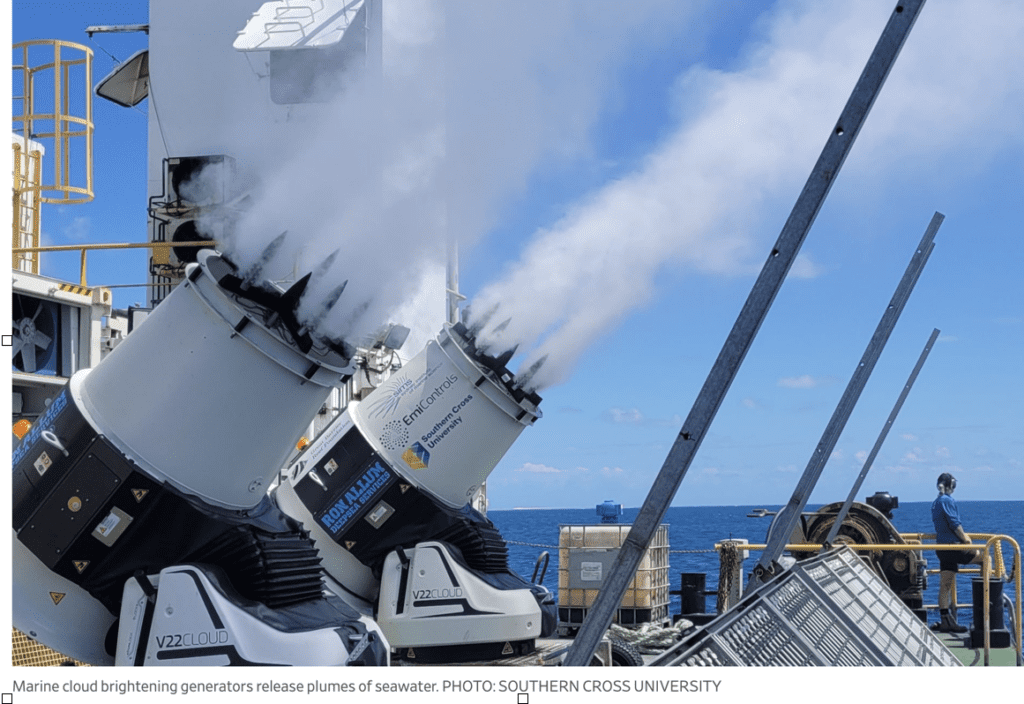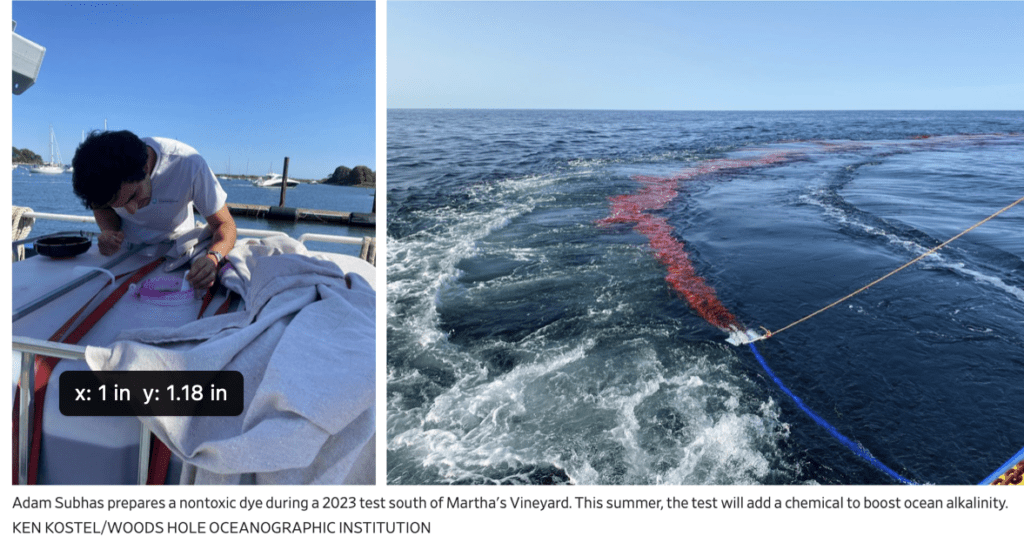Daniel Salzler No. 1242 EnviroInsight.org Three Items February 23, 2024
—————Feel Free To Pass This Along To Others——————
If your watershed is doing something you would like others to know about, or you know
of something others can benefit from, let me know and I will place it in this Information .
If you want to be removed from the distribution list, please let me know.
Please note that all meetings listed are open.
Enhance your viewing by downloading the pdf file to view photos, etc.
The attached is all about improving life in the watershed through knowledge.
If you want to be removed from the distribution list,
please let me know. Plea. se note that all meetings listed are open.
Check our website at EnviroInsight.org
- Upper Agua Fria Watershed February Meeting Notes. The Upper Agua Fria Watershed group met on February 6, 2024. There was discussion on the following topics:
a. Introduction ad Announcements
b. Development Updates
– Candela Agua ria Solar Farm
– Lakeshore 650
c. Black Canyon City Water Issues
d. Theodore Roosevelt Conservation Partnership
e. ADWR
f. FAFNM: Tim Flood
g. Black Canyon Heritage Park
h. UAFWP: Organizational Efforts
i. Other business
– Ground water
– Small amounts of PFAS in some watershed wells
If you are interested in getting the details of these subjects, contact the editor (sconflict@aol.com) or Agua Fria Watershed Contact, Mary Hoadley (maryhoadley@icloud.com)
2.. Scientists Resort t/o Once-Unthinkable Solutions to Cool the Planet. Are We Playing God With Our Planet ?
Three geoengineering projects seek to alter the chemistry of the atmosphere and the ocean. Critics warn of unintended consequences.
Dumping chemicals in the ocean? Spraying saltwater into clouds? Injecting reflective particles into the sky? Scientists are resorting to once unthinkable techniques to cool the planet because global efforts to check greenhouse gas emissions are failing.
These geoengineering approaches were once considered taboo by scientists and regulators who feared that tinkering with the environment could have unintended consequences, but now researchers are receiving taxpayer funds and private investments to get out of the lab and test these methods outdoors.
The shift reflects growing concern that efforts to reduce greenhouse gas emissions aren’t moving fast enough to prevent the destructive effects of heat waves, storms and floods made worse by climate e change.
Geoengineering isn’t a substitute for reducing emissions, according to scientists and business leaders involved in the projects. Rather, it is a way to slow climate warming in the next few years while buying time to switch to a carbon-free economy in the longer term.
Three field experiments are under way in the U.S. and overseas.
This month, researchers aboard a ship off the northeastern coast of Australia near the Whitsunday Islands are spraying a briny mixture through high-pressure nozzles into the air in an attempt to brighten low-altitude clouds that form over the ocean. Scientists hope bigger, brighter clouds will reflect sunlight away from the Earth, shade the ocean surface and cool the waters around the Great Barrier Reef, where warming ocean temperatures have contributed to massive coral die-offs.
The research project, known as marine cloud brightening, is led by Southern Cross University as part of the $64.55 million, or 100 million Australian dollars, Reef Restoration and Adaptation Program. The program is funded by the partnership between the Australian government’s Reef Trust and the Great Barrier Reef Foundation and includes conservation organizations and several academic institutions.
In Israel, a startup called Stardust Solutions has begun testing a system to disperse a cloud of tiny reflective particles about 60,000 feet in altitude, reflecting sunlight away from Earth to cool the atmosphere in a concept known as solar radiation management, or SRM. Yanai Yedvab, Stardust chief executive and a former deputy chief scientist at the Israel Atomic Energy Commission, wouldn’t disclose the composition of the proprietary particles.

Yedvab said Stardust has raised $15 million from two investors and has conducted low-level aerial tests using white smoke to simulate the particles’ path in the atmosphere. After the company completes indoor safety testing, it intends to conduct a limited outdoor test of the dispersion technology, monitoring devices and particles in the next few months, Yedvab said.
Tweaking the Climate
Three projects underway aim to alter the chemistry of the atmosphere and oceans to cool the planet
In Massachusetts, researchers at the Woods Hole Oceanographic Institution plan to pour 6,000 gallons of a liquid solution of sodium hydroxide, a com[pound of lye, into the ocean 10 miles|
south of Martha’s Vineyard this summer. They hope the chemical base will act like a big tablet of Tums, lowering the acidity of a patch of surface water and absorbing 20 metric tons of carbon dioxide from the atmosphere, storing it safely in the ocean.
The $10 million project, known as ocean alkalinity enhancement, is funded by the National Oceanic and Atmospheric Administration, two philanthropies and several private donors, Subhas said. The release of sodium hydroxide, which will require the approval of the U.S.

Environmental Protection Agency, is planned for August.
Experiments aimed at cooling the atmosphere by reflecting sunlight away from Earth are an attempt to mimic what happens when a volcano erupts. In 1991, Mount Pinatubo, an active volcano in the Philippines, spewed sulfur and ash into the upper atmosphere, lowering the Earth’s temperature by .5 degrees Celsius (. 9 degrees Fahrenheit) for an entire year.
But until a few years ago, many scientists opposed human interventions, fearing a slippery slope that would allow society to avoid making tough decisions about reducing emissions and could ultimately backfire.
“It very easily becomes an excuse for not doing all the things that we already can do and that we know will work,” said Dan Jørgensen, Denmark’s minister for global climate policy. “When we start interfering with nature, we risk it also having many very negative consequences that we cannot control and that we cannot foresee.”
Intervention is needed, Jørgensen said, “but we need to be extremely careful how we do it.”
Daniele Visioni, assistant professor of earth and atmospheric sciences at Cornell University, echoed that sentiment.

“Now we’re at the point where the choice isn’t between yes or no about doing SRM, but between making an informed decision versus making an uninformed decision,” Visioni said.
The National Academy of Sciences released a study in 2021 advocating a cautious approach to studying solar geoengineering technologies, and a second report in 2022 reviewed various methods of storing carbon dioxide in the ocean.
In 2023, the White House issued research guidelines for injecting reflective particles into the atmosphere and brightening clouds, concluding that the technologies offer the possibility of cooling the planet but also carry unknown risks, such as depleting the protective ozone layer, harming marine life, damaging crops or altering rainfall patterns.
And this month, in Nairobi, Kenya, delegates to the United Nations Environmental Assembly will debate a resolution to consider the risks and benefits of solar radiation management.
The goal behind this year’s field experiments in the U.S., Israel and Australia is to address some of these questions and to get information about whether these projects could lay the foundation for large-scale efforts to cool the planet.
“They are answering really important questions about if we were to spray sea salt into the atmosphere,” Michael Diamond, assistant professor of meteorology and environmental science at Florida State University, said about the Australian cloud brightening experiment. “Would that make it to the clouds, would it stay up there? Can you get enough brightening to make a difference?”
For any of these projects to go from field trial to full-scale global deployment, it would require international cooperation and likely cost trillions of dollars. That scenario is years away.
“There’s a huge political hesitancy to do outdoor perturbative experiments,” said Jessica Seddon, a senior fellow at the Yale Jackson School of Global Affairs. “It’s going to take some extraordinary bravery to acknowledge that in certain circumstances those experiments will be needed, have informational value and should be constrained but not banned.”
Source: Wall Street Journal. Stacy Meichtry contributed to this article. Write to Eric Niiler at eric.niiler@wsj.com
3. Tucson Wants Your Help In Controlling Buffelgrass. Buffelgrass is identified by the following characteristics:
- bunch grass — all stems come from a centralized point to form a large ‘clump’
- color — plants quickly respond to moisture by turning bright green; during dry periods, which means most of the year, buffelgrass is the color of straw
- bottlebrush inflorescence — the seeds develop on the end of a stalk, which has a slightly fuzzy appearance that looks like a bottlebrush
- rough rachis — the central stem that holds the seeds is extremely rough if you run your fingers from the bottom to the top
- hairy ligule — the ligule is the spot where the leaf blade diverges from the stem; delicate hairs are obvious when the leaf blade is pulled slightly away from the stem
- rough leaf blade — the leaf blade contains small stiff hairs so if you run your fingers gently along the blade from the stem to the tip of the leaf it will feel rough

There is a booklet you can get to help with your identification. Just go online to https://desertmuseum.org/buffelgrass/request_guide.php
Copyright EnviroInsight.org
